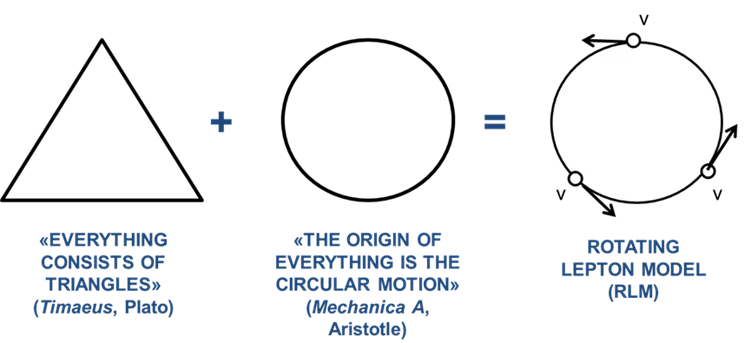
Unveiling the Mysteries of Baryogenesis: The Impact of Neutrinos, Quantum Mechanics, and Special Relativity
2025-04-01
Author: Mei
In an exciting exploration led by Constantinos G. Vayenas from the University of Patras and the Academy of Athens, the intricate roles of neutrinos, quantum mechanics, and special relativity in the phenomenon known as baryogenesis are being redefined. Baryogenesis is the theoretical process explaining the imbalance between matter and antimatter in our universe, a fundamental question in cosmology.
Astronomy, Chemistry, and Nuclear Physics all acknowledge the significance of rotating particles, which are crucial in understanding various cosmic phenomena. From the Bohr model in Chemistry to the Rotating Lepton Model (RLM) in particle physics, the concept of rotating particle systems traces back to insights from ancient philosophers like Plato and Aristotle. They recognized that "cycling motion is the origin of everything," laying the philosophical groundwork for modern scientific inquiry.
The geometry of particle interactions is fundamentally important. When focusing on three identical particles, the equilateral triangle configuration emerges as a natural fit within the RLM. This model not only accommodates leptons such as electrons and positrons but also offers insight into the creation of bosons through their interactions.
Central to this model is the rotating three-neutrino ring, particularly in the case of protons. The dynamics of this ring involve various particles (neutrinos, electrons, positrons) rotating at velocities approaching the speed of light, while the center of rotation remains effectively at rest, allowing it to be used as a laboratory reference frame.
Vayenas presents a bold mathematical formulation of the RLM, comprised of three key equations that intertwine the principles of special relativity with quantum mechanics: 1. **The Equation of Motion**: This accounts for centripetal and gravitational forces, respecting the speed limits defined by relativity. 2. **The de Broglie Equation**: This captures the dual nature of particles as both waves and discrete entities, reconciling classical and quantum physics. 3. **Energy Balance**: It calculates the total energy in a system of rotating particles using principles of special relativity.
Remarkably, the model's accuracy extends to predicting the mass of protons and neutrons within a mere two percent deviation from experimental values—a stunning congruence that reinforces the RLM's validity.
Beyond just theoretical implications, the RLM methodology allows for practical computations of the masses of hadrons and other composite particles. By fitting observed decay products to geometric models, researchers can derive particle masses that match experimental observations, thereby refining our understanding of particle physics.
This significant research has garnered attention in various scientific circles and publications, indicating a pivotal moment in physics where traditional models may be reshaped to better reflect the complexities of particle interactions.
As we continue to probe deeper into the origins of our universe, the fusion of ancient philosophy, modern physics, and experimental data presents a thrilling narrative. The journey to understand baryogenesis not only illuminates the past but also guides our quest for knowledge about the fundamental forces shaping our existence.
Stay tuned for more groundbreaking revelations from the world of particle physics and cosmology. What other secrets does our universe hold?




 Brasil (PT)
Brasil (PT)
 Canada (EN)
Canada (EN)
 Chile (ES)
Chile (ES)
 Česko (CS)
Česko (CS)
 대한민국 (KO)
대한민국 (KO)
 España (ES)
España (ES)
 France (FR)
France (FR)
 Hong Kong (EN)
Hong Kong (EN)
 Italia (IT)
Italia (IT)
 日本 (JA)
日本 (JA)
 Magyarország (HU)
Magyarország (HU)
 Norge (NO)
Norge (NO)
 Polska (PL)
Polska (PL)
 Schweiz (DE)
Schweiz (DE)
 Singapore (EN)
Singapore (EN)
 Sverige (SV)
Sverige (SV)
 Suomi (FI)
Suomi (FI)
 Türkiye (TR)
Türkiye (TR)
 الإمارات العربية المتحدة (AR)
الإمارات العربية المتحدة (AR)